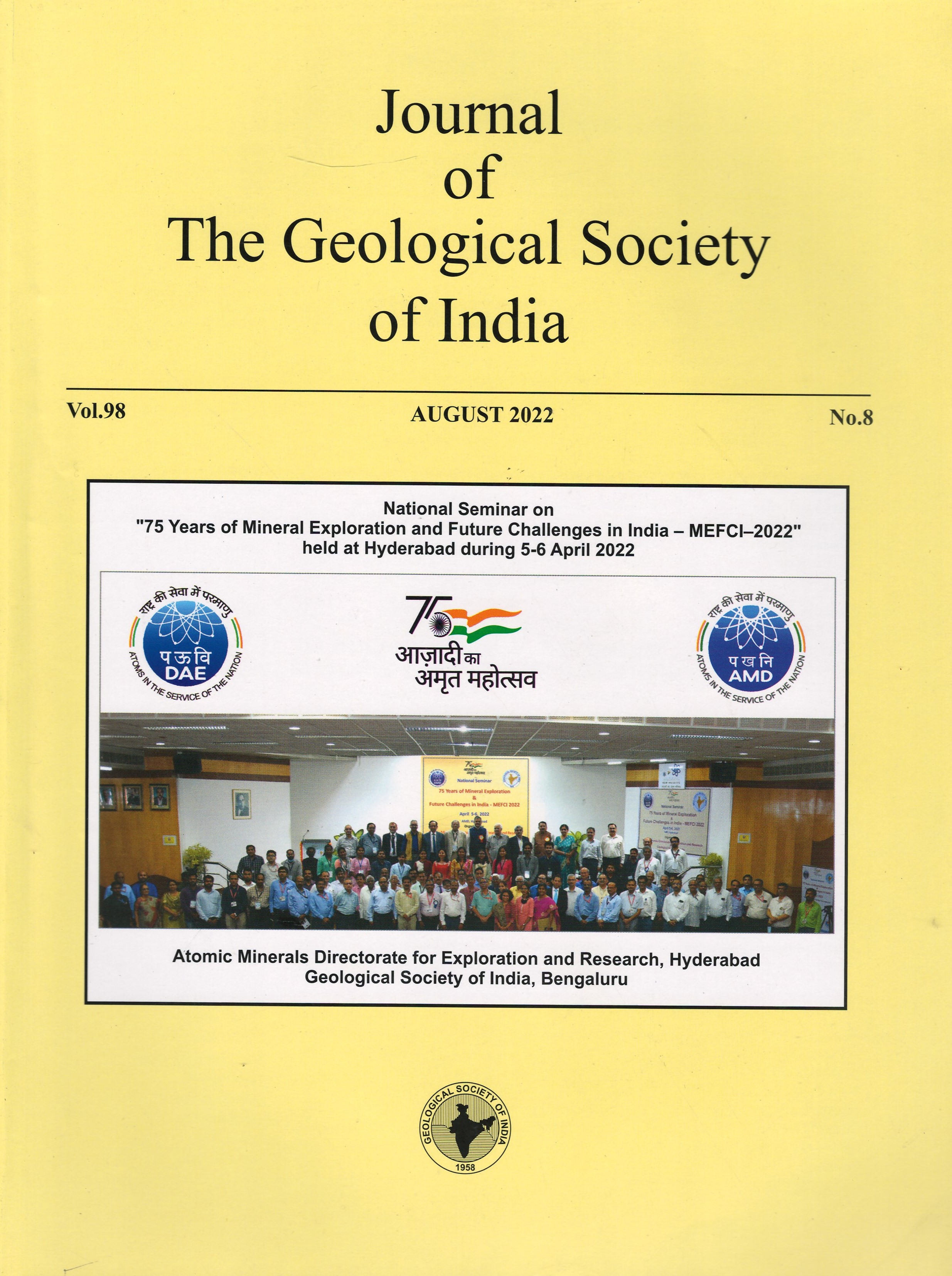Hydrothermal Uranium Mineralization in Umra, Udaipur District, Rajasthan, India: Inferences from Petrography, Mineral Chemistry and Sulfur Isotopic Studies
DOI:
https://doi.org/10.1007/s12594-022-2124-9Keywords:
No KeywordsAbstract
Uranium mineralization at Umra, Udaipur district, Rajasthan is hosted by carbon and siliceous phyllite (with minor calcareous components) of the Paleoproterozoic Aravalli Supergroup. The mineralized zone trends NE-SW to N-S, dipping 45-55° towards SE to E.
Uraninite, coffinite and brannerite are the main uranium phases observed that occur in association with sulphides (pyrrhotite, pentlandite, gersdorffite, chalcopyrite and pyrite), magnetite and ilmenite. Uraninite is found to occur as veins and disseminated ultrafine grains. Colloform and botryoidal texture with shrinkage/ synaeresis cracks indicate the presence of pitchblende also, formed at relatively low-temperature. Textural features suggest remobilization of disseminated syngenetic and / or diagenetic uranium minerals during low-grade metamorphism and deformation. Textural features suggest multiple phases of sulphide mineralization also.
Mineral chemical data indicate that uraninite and pitchblende are compositionally similar containing 80.09-87.17 wt.% UO2 (av. 84.45 wt.%) and 11.37-11.82 wt.% PbO (av. 11.58 wt.%) with negligible SiO2, CaO, TiO2, FeO, ThO2 and RE2O3. High U/Th ratio (>1000) in uraninite/ pitchblende indicates limited cationic substitution and therefore low temperature (<350°C) hydrothermal origin of mineralization. Chemical age, calculated on the basis of UO2, ThO2 and PbO concentration in uraninite, indicates the minimum age of mineralization is 956±12 Ma.
S isotopic data of pyrite suggest syn-sedimentary or diagenetic origin by bacterial reduction of seawater or pore water sulphate under anoxic conditions (-24.7‰ to -16.2‰), as well as hydrothermal (-3.7‰ to +8.8‰) origin. Similarity of S isotopic composition of hydrothermal pyrite with that of pyrite (+5.2‰) from meta-basic rock indicates that a component of S has been derived from the associated basic/meta-basic rocks in the area.
Signatures of multiple generations of uranium mineralization, and multiple episodes of deformation, metamorphism and hydrothermal alteration reveal a complex metallogenic history in Umra. Compositional details of uraninite and their occurrence in the form of veinlets in association with hydrothermal pyrite suggest dominantly epigenetic hydrothermal mineralization events coeval with deformations of the Aravalli sediments.

 Navin Goyal
Navin Goyal






